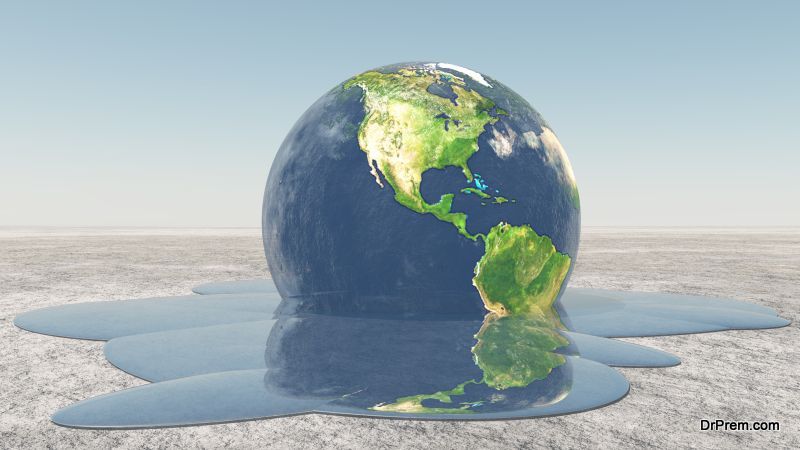We have truly seen the devastating effects of global warming in 2017. The Atlantic hurricane season saw an unprecedented six major storms devastate parts of the US and Caribbean. Hurricane Harvey became the costliest tropical cyclone on record inflicting nearly $200 billion in damage, while category five storms Irma and Maria left Dominica, Puerto Rico and some of the Caribbean’s Leeward Islands in ruins. We’ve also seen raging wildfires, catastrophic flooding and the worst mass coral bleaching event on record.
If seeing is believing, then surely the events of 2017 should be enough to persuade us to adopt more sustainable lifestyles. But, as if that wasn’t enough, a group of artists are creating works that expose the damaging effects of climate change. By showcasing scientific data or Mother Nature at her most extreme, these artists hope to persuade viewers to do something to help the world, now.
Land art can show the effects of climate change in real time
Using the natural environment as a canvas allows artists to draw attention to the effects of climate change in real time. For example, Sean “Hula” Yoro paints murals on natural surfaces such as icebergs which then rapidly melt away. The goal is to ignite a sense of urgency about climate change.
The late British artist Barry Flanagan also worked with a range of natural mediums. His early sculptures, created with sand, sticks and rope among other materials, explored how their form could be determined by forces such as heat. Similarly, Robert Smithson created the Spiral Jetty, which was famously hidden for three decades due to a rise in sea water level at the Great Salt Lake in Utah where it lies.
Artists are using their work to make climate change data more visible
One of the challenges of combating global warming is convincing people that they will be directly affected by climate change. In the US, most people accept climate change is happening, but only 40% of Americans acknowledge it will actually harm them, according to data released by the Yale Program on Climate Communication.
Designer Brian Foo is trying to change that by simplifying scientific data to make it easier for people to interpret. Tapping into the popularity of adult colouring books, Foo created the Climate Change Colouring Book, which encourages users to colour in different sets of data related to climate change. This includes colouring everything from the level of daily air pollution in Beijing, to shading coastlines to show the amount of land lost to rising sea levels.
It’s not just humans that are going to be affected
Artist and ocean advocate Courtney Mattison has been working hard on ceramic installations that highlight the effect that climate change has on marine ecosystems. One of her most recent works, Aqueduct, featured hundreds of porcelain corals, anemones and sponges sprouting from a porcelain air duct. The installation begged the question – where will sea creates migrate to once their homes become uninhabitable? Of course, viewers were presented with the uncomfortable truth that these creatures are rooted to the ocean floor and cannot move around like other marine species, leaving them facing extinction as sea temperatures rise.
Not all people are convinced. Just look at Donald Trump’s decision to pull out of the Paris Climate Agreement earlier this year. If powerful world leaders like Trump are not going to highlight the worsening threat of climate change, then it might just be up to environmental artists to raise awareness and convince us to lead more sustainable lifestyles.
Article Submitted By Community Writer




